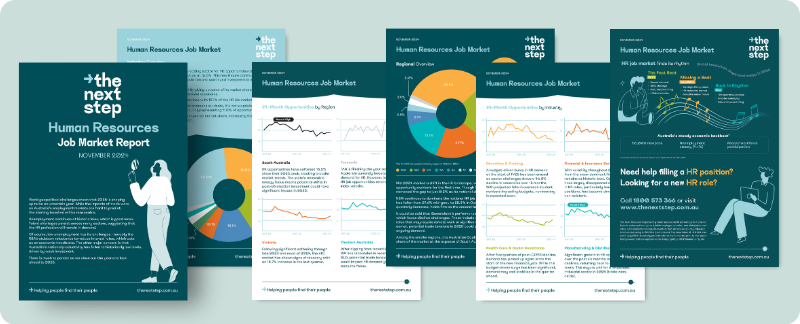Human Resources Job Market Report
Human Resources Job Market Report
Exclusive data reveals in demand skills & jobs data
Gain insights into HR job opportunities with The Next Step's comprehensive Human Resources Job Market Report. This exclusive report offers detailed analysis of HR career trends and emerging HR job opportunities across Australia.
Inside this report, you'll discover:
- Which HR disciplines are experiencing the highest demand
- Regional hotspots with changes to hiring activity
- Industry hiring hotspots for HR professionals
- Top Human Resources skills employers need now

Essential insights for employers and professionals
Whether you're hiring HR talent or seeking your next career move, this analysis provides the market intelligence you need to make informed decisions.
The Next Step's HR Job Opportunities Index has carefully tracked HR employment data since 2015, providing job seekers and employers with accurate Human Resources employment trends.
Download The Next Step's Human Resources job market report today for access to insights that will give you a competitive edge.
Get the Feb '25 report
Australia's HR job market: February 2025
2025 has begun on a positive note for Australia, with strong demand for skilled professionals, easing inflation and an interest rate cut, which should help stimulate economic activity. However, challenges remain, including global economic and political uncertainty, cautious household spending, and the unpredictability of an upcoming federal election.
Declining labour productivity is limiting potential wage growth, despite cost-of-
living pressures, while the anticipated productivity gains from generative AI are yet to materialise at scale, with most organisations still in the early adoption stage.
Using data from 6,000+ job listings and job boards, the authoritative February 2025 report delivers actionable intelligence you won't find anywhere else.
Want the full insights? Sign up now to receive our comprehensive Human Resources Job Market Report and get the detailed analysis delivered directly to your inbox.



